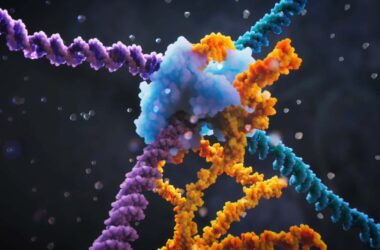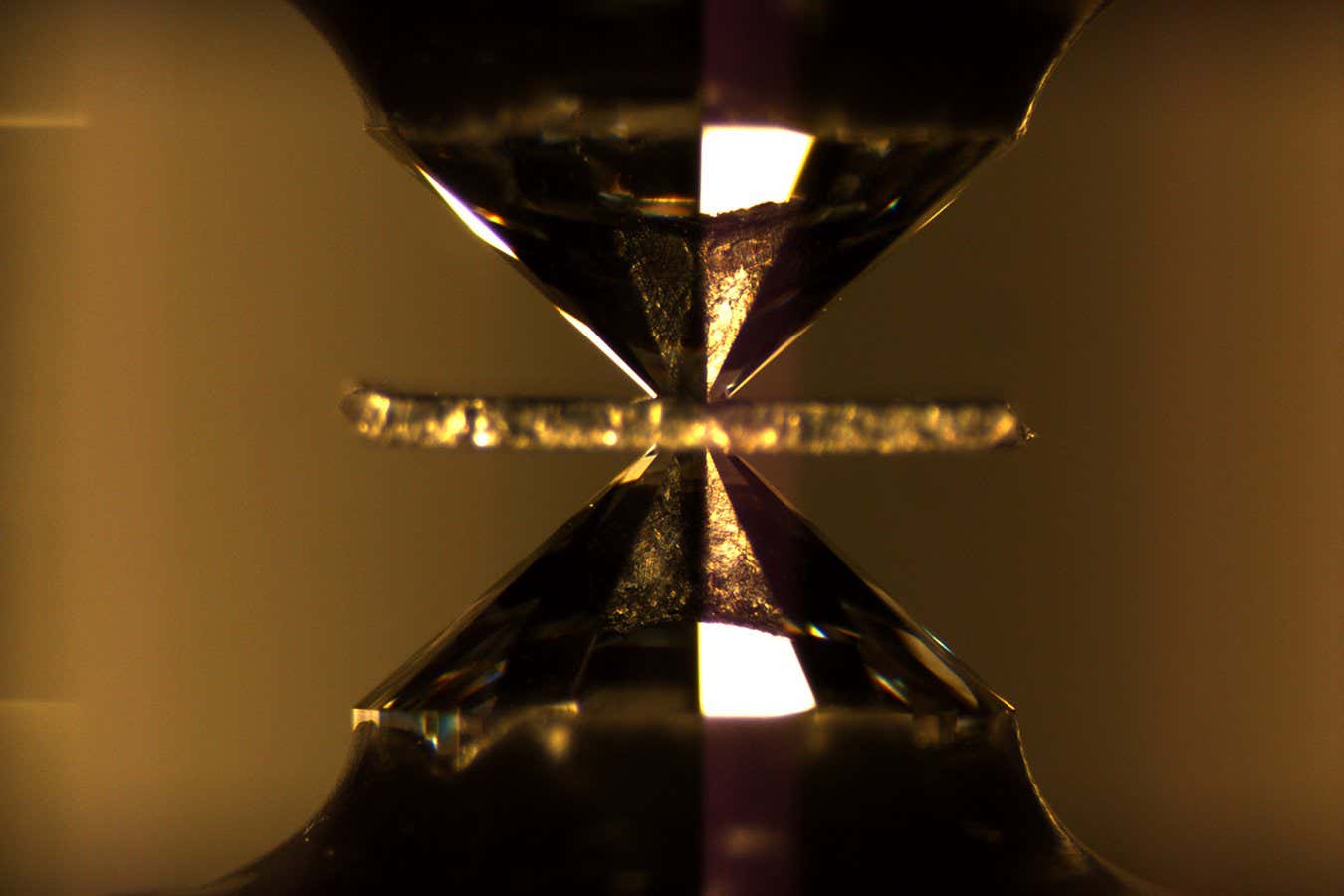Scientists may have achieved a major breakthrough in the quest for room-temperature, room-pressure superconductivity. Superconductivity, where electricity flows through a material with zero resistance, has the potential to revolutionize the way we power our world. However, previous superconductors have required high pressures and low temperatures. Now, researchers at the University of Rochester claim to have created a superconducting material made from hydrogen, nitrogen, and lutetium that becomes superconductive at just 21°C (69°F) and a pressure of 1 gigapascal. Although this is still a high pressure, it is significantly lower than previous superconducting materials.
The researchers compressed the material using a diamond anvil and observed its color change from blue to red, earning it the nickname “red matter.” They conducted tests on the material’s electrical resistance, heat capacity, and its interaction with a magnetic field, all of which pointed towards it being superconductive.
However, not all researchers are convinced. Some have reservations due to controversy surrounding a previous paper by the same team, which claimed room-temperature superconductivity but was later retracted. Skepticism arises from a lack of understanding about the mechanism behind red matter’s possible superconductivity and the need for a better understanding of its structure.
If the researchers can provide answers to these questions and independent groups are able to verify red matter’s superconductivity and figure out its structure, this could be a groundbreaking scientific discovery. A room-temperature, room-pressure superconductor could greatly improve the efficiency and sustainability of the electrical power grid and enable advancements in technologies such as magnetic levitation.
However, further scrutiny and reproducibility are necessary. The use of relatively common pressure cells for the experiment increases the likelihood of independent verification. If successful, this could mark the beginning of an energy revolution.
Topics:








